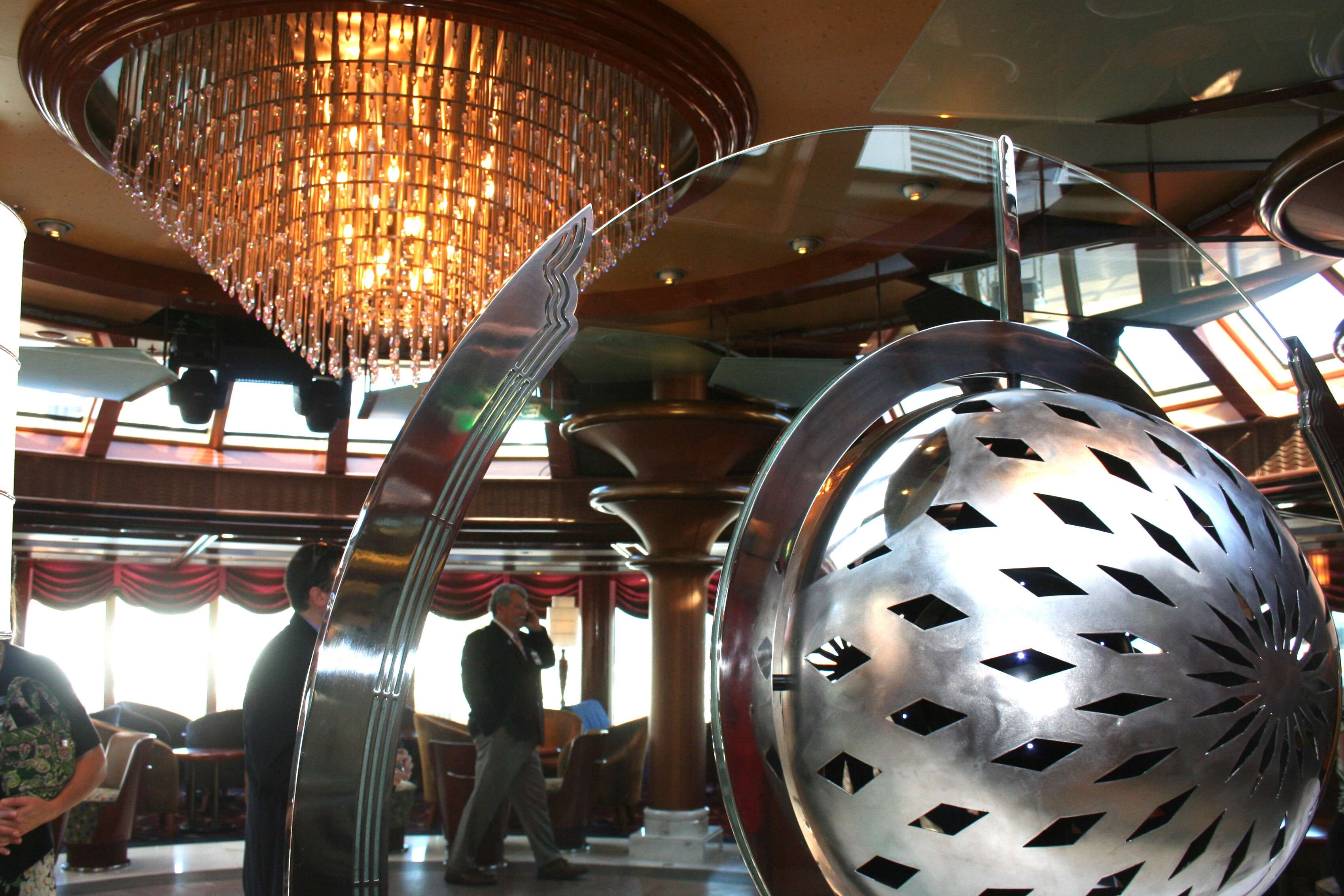
As Bar Harbor cruise ship season starts, congestion debate heats up
 Laurie Schreiber Photo
The 1,132-foot Queen Mary 2 is expected in Bar Harbor twice this year, carrying 2,620 passengers and 1,178 crew members.
Laurie Schreiber Photo
The 1,132-foot Queen Mary 2 is expected in Bar Harbor twice this year, carrying 2,620 passengers and 1,178 crew members.
The port of Bar Harbor expects the arrival of 177 ships carrying 275,198 passengers for the 2019 season.
The ship number is down from 2018’s 180 scheduled visits. But the passenger number is up from 2018’s 230,000.
Bar Harbor is Maine’s busiest port, with the number of cruise ships generally trending upward over the past two decades. The industry is viewed by many local residents as an economic driver. But it also sparks concerns about traffic congestion.
The town’s capacity to accommodate increasing numbers of passengers was raised anew at the Bar Harbor Town Council’s May 7 meeting.
“One of the byproducts with the cruise ship industry is the busing industry and the movement industry of these people,” said Councilor Joe Minutolo. “And it’s changed the complexion of [Acadia National Park] in so many ways, especially in the fringe part of the season.”
Maximum capacity?
Capacity has been a recurring theme over the years.
“That’s an issue we need to grab hold of,” Minutolo said. “We’re recognized as a huge cruise ship port. There’s a lot of people in this town, and a lot of people in the park and a lot of visitors who are concerned about how deep we’re going. Will this ever be looked at?”
Minutolo said that the town’s ferry terminal advisory committee, in discussions over recent years, “felt 179,000 seemed to be capacity.”
Cruise Ship Committee chairman Eben Salvatore said his committee reviews the question annually. And this year, he said, the committee has commissioned an economic impact study that is still pending.
“In 10 years, we’ve asked for two discretionary increases” of passenger numbers, Salvatore said. “It’s difficult: 179,000 is just as easy to point to as 279,000.”

Minutolo said he was more concerned about per-day counts, rather than per-year.
“When you have three ships in the harbor, and all these buses and all this movement, the park can be a pretty unpleasureable place to get around,” Minutolo said. “Are we ever going to talk about what it’s like when we have maximum capacity and maximum movement and maybe rethink these numbers?”
He added, “We all want to be profitable. We all like having these people come through. But we all want to keep the quality of life here, too.”
“It’s important to look at the passenger caps per day,” agreed Councilor Judy Noonan. “But we should also be looking seasonally. The ferry terminal committee thought perhaps the tipping point was 179,000. This year we’re expecting 275,1098. That’s 100,000 more people.”
That results in more tour bus and taxi traffic, as passengers make their way into Acadia, she said.
“I understand we look at the caps every year, but I think we need to look at the whole picture from a seasonal standpoint, and not just daily caps,” Noonan said.
But the council’s vice-chairman, Matthew Hochman, noted that cruise ship visitors make up only part of the overall visitor numbers. Last year, Acadia National Park alone hosted 3.5 million visitors, according to the National Park Service. That does not include people who only visited Bar Harbor or the other area attractions.
“So do we look at capping land-based visitors as well?” Hochman said. “Where do we draw the line? Where do we say that one way to get her is good and one way is bad?”
Hochman noted that the arrival of visitors via cruise ships at least means they aren’t bringing along vehicles “and clogging our streets.”
Cruise ships, he continued, are a big and visible target.
“It’s easy to say we’re busy because of cruise ships,” Hochman said. “But in August, we’re busy even without cruise ships. So I’d caution against saying that one way of getting here is a problem. It’s still a minority of our visitors.”
Salvatore pointed to the park's new transportation plan as a strategy to alleviate congestion and improve visitor experience.
The plan, released in March, includes a timed-entry reservation system for three of the park’s most popular spots during peak season and a phase-out of right-lane parking on Loop Road, among its provisions. Full implementation of the plan is likely to take up to a decade or more, though initial work may begin in 2020.










0 Comments